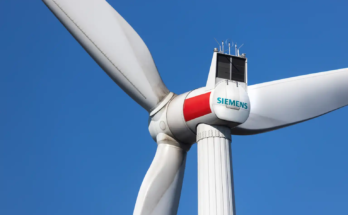
In a groundbreaking study by Northwestern University, it has been revealed that replacing 30% of on-road combustion-engine vehicles in the Chicago’s Electric Vehicle Transition region with electric counterparts could lead to annual savings of over $10 billion and more than 1,000 lives. This remarkable research, focused on improving air quality and reducing the impacts of human-caused climate change, sheds light on the significant benefits of electric vehicles (EVs). Furthermore, it highlights the potential for alleviating air quality disparities, especially in communities predominantly composed of Black, Hispanic, and Latinx residents.
The Power of Electric Vehicles for Health and Climate
The study, recently published in the journal Environmental Research: Infrastructure and Sustainability on September 13, challenges a common misconception about EVs. It addresses the belief that areas near power plants, often comprising minority communities, experience heightened air quality issues due to increased electricity demand and power plant emissions. The lead author of the study, Maxime Visa from Northwestern, debunks this myth, stating that “our study found that on-road emission decreases more than offset power plant emission increases.”
The most significant air quality improvements resulting from widespread EV adoption are seen in communities historically susceptible to poor air quality due to systemic injustices and their proximity to busy roads and interstates. This research points towards vehicle electrification as a potential solution for long-standing air quality disparities in and around the city of Chicago’s Electric Vehicle Transition.
Heavy-Duty vs. Light-Duty Vehicles: A Comparative Analysis
Building on these findings, the research differentiates between heavy-duty and light-duty vehicles. A prior study from Daniel Horton’s lab explored scenarios in which 30% of predominantly diesel-powered heavy-duty vehicles were replaced with electric alternatives. This research highlighted that electrifying heavy-duty vehicles would save more than 500 lives and approximately $5 billion annually. In Maxime Visa’s study, both light and heavy-duty vehicles were considered.
Horton emphasizes the need to encourage an electric transition across all vehicle types. Despite the disproportionate emission levels of heavy-duty vehicles per unit, the sheer number of light-duty vehicles on the road necessitates a holistic approach.
Data-Driven Impact Assessment
Both studies utilized a high-resolution air-quality model developed in Horton’s lab, enabling the simulation and quantification of pollution levels at a neighborhood level. This comprehensive approach tracked pollutants across areas as small as one kilometer.
Measuring the Impact
Based on the 2016 energy-generation infrastructure, the research team projected the remarkable impact of electrifying 30% of the Chicago’s Electric Vehicle Transition on-road vehicle fleet:
- Carbon dioxide emissions would decrease by approximately 15.1 million tonnes (16.65 million U.S. tons) annually.
- The reduction in nitrogen dioxide and particulate matter would avert 1,120 and 170 annual premature deaths, respectively.
- However, an increase in ozone would cause approximately 80 additional premature deaths annually.
In economic terms, the greater Chicago’s Electric Vehicle Transition region could save $10.7 billion and $1.63 billion in annual health costs due to reductions in nitrogen dioxide and particulate matter. Nevertheless, the slight increase in ozone levels would incur an additional cost of $768 million annually.
It’s worth noting that these numbers could be significantly higher if the power grid incorporates more emissions-free electricity sources like wind and solar.
The Road to a Greener Future
Maxime Visa, the study’s lead author, emphasizes that nearly a quarter of U.S. greenhouse gas emissions originate from the on-road sector. This sector is a crucial target for climate change mitigation strategies. However, the downstream air-quality effects of vehicle electrification are often overlooked. The results of this research confirm that these effects should be given due consideration. Visa hopes that by showcasing the cleaner air and health benefits associated with Chicago’s Electric Vehicle Transition adoption, consumers and policymakers will be encouraged to make the transition to cleaner modes of transportation.
This comprehensive study, titled “Neighborhood-scale air quality, public health, and equity implications of multi-modal vehicle electrification,” was conducted in collaboration with researchers from the University of Notre Dame, George Washington University, and the Lake Michigan Air Directors Consortium. It was supported by the National Science Foundation, the Environmental Defense Fund, the McCormick Center for Engineering Sustainability and Resilience, and the Ubben Program for Carbon and Climate Science at the Paula M. Trienens Institute for Sustainability and Energy at Northwestern University.
Reference
https://www.sciencedaily.com/releases/2023/09/230913122840.htm


